Vintage - Plans of 110 ft Sub-Chasers Layout Blueprint - Bluejacket Shipcrafters


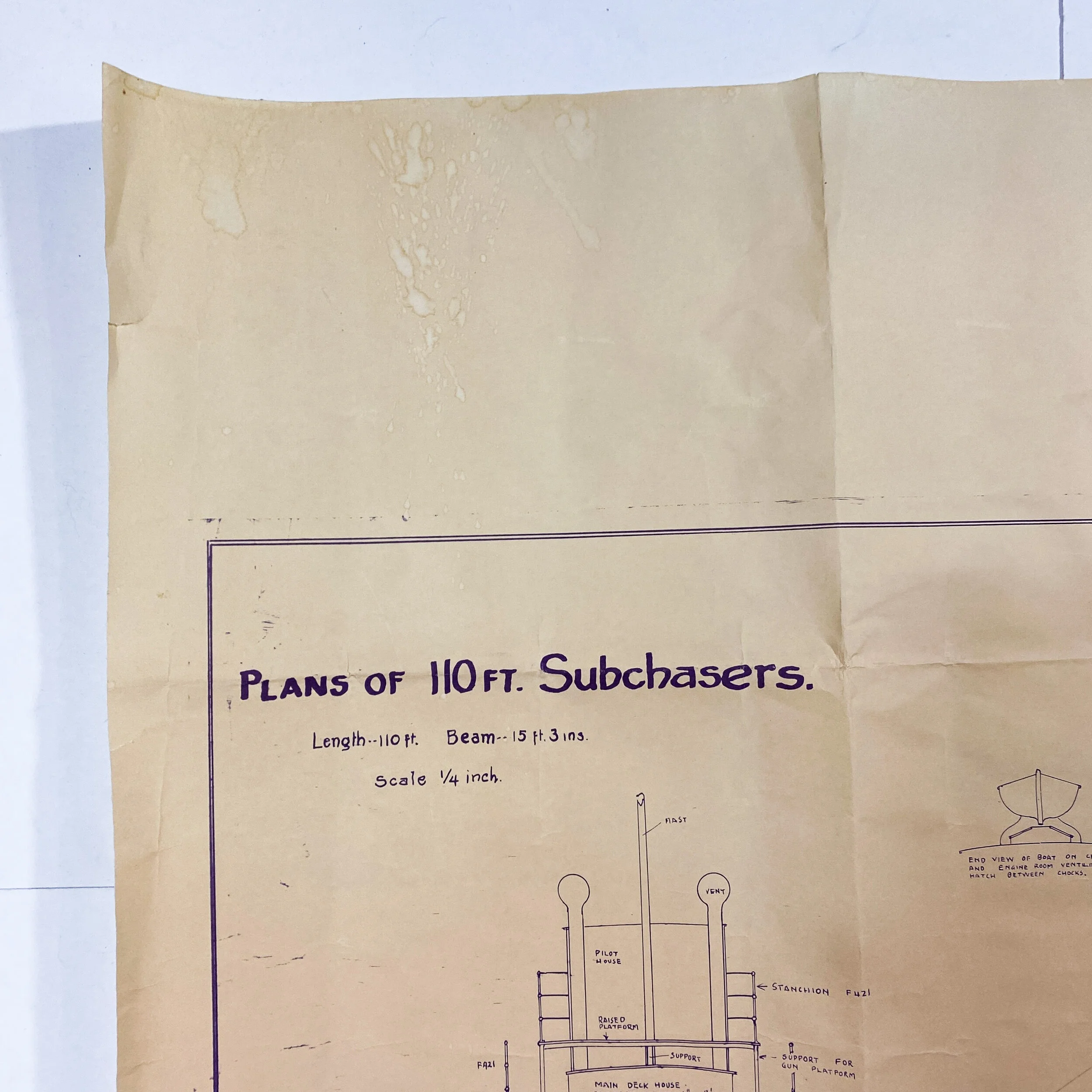
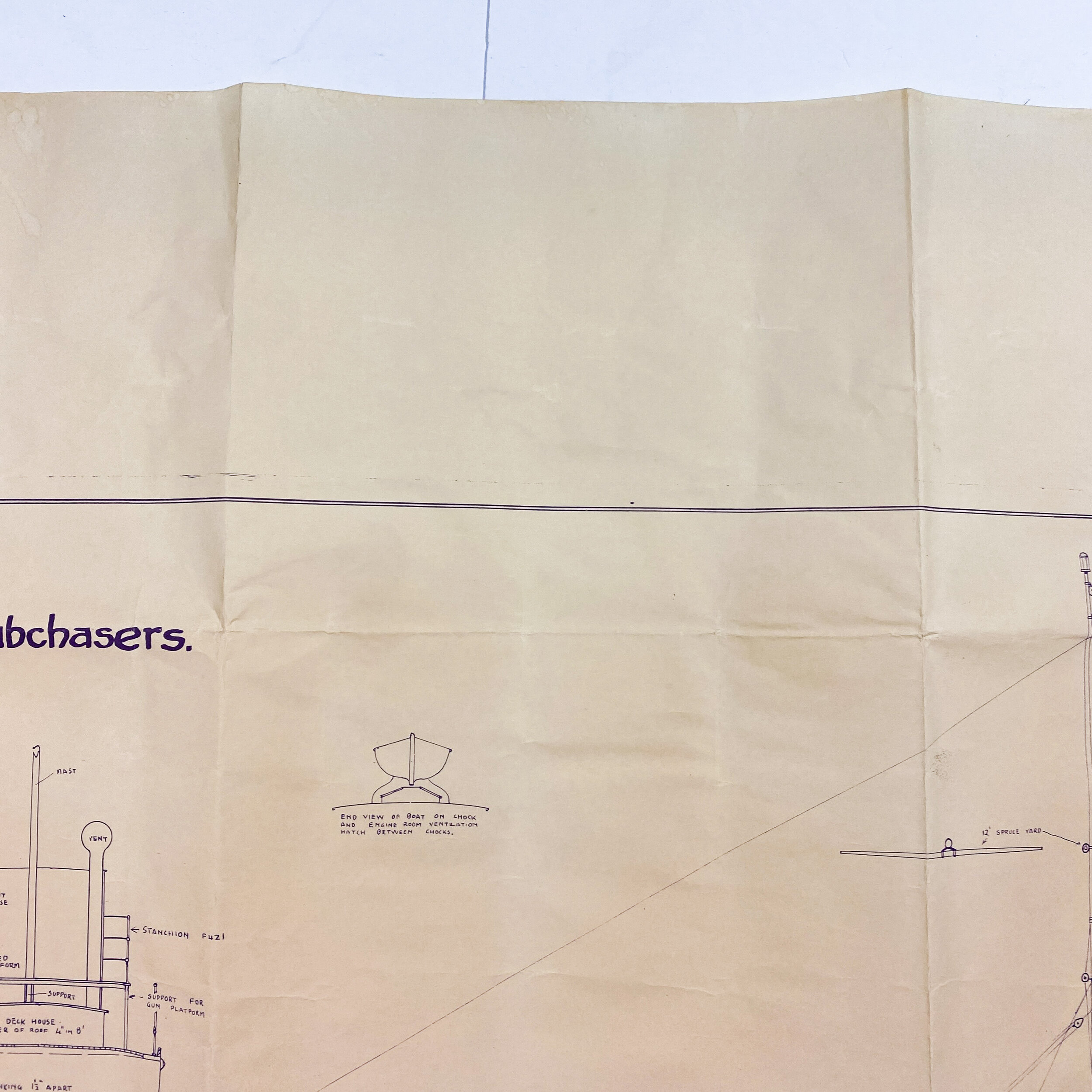


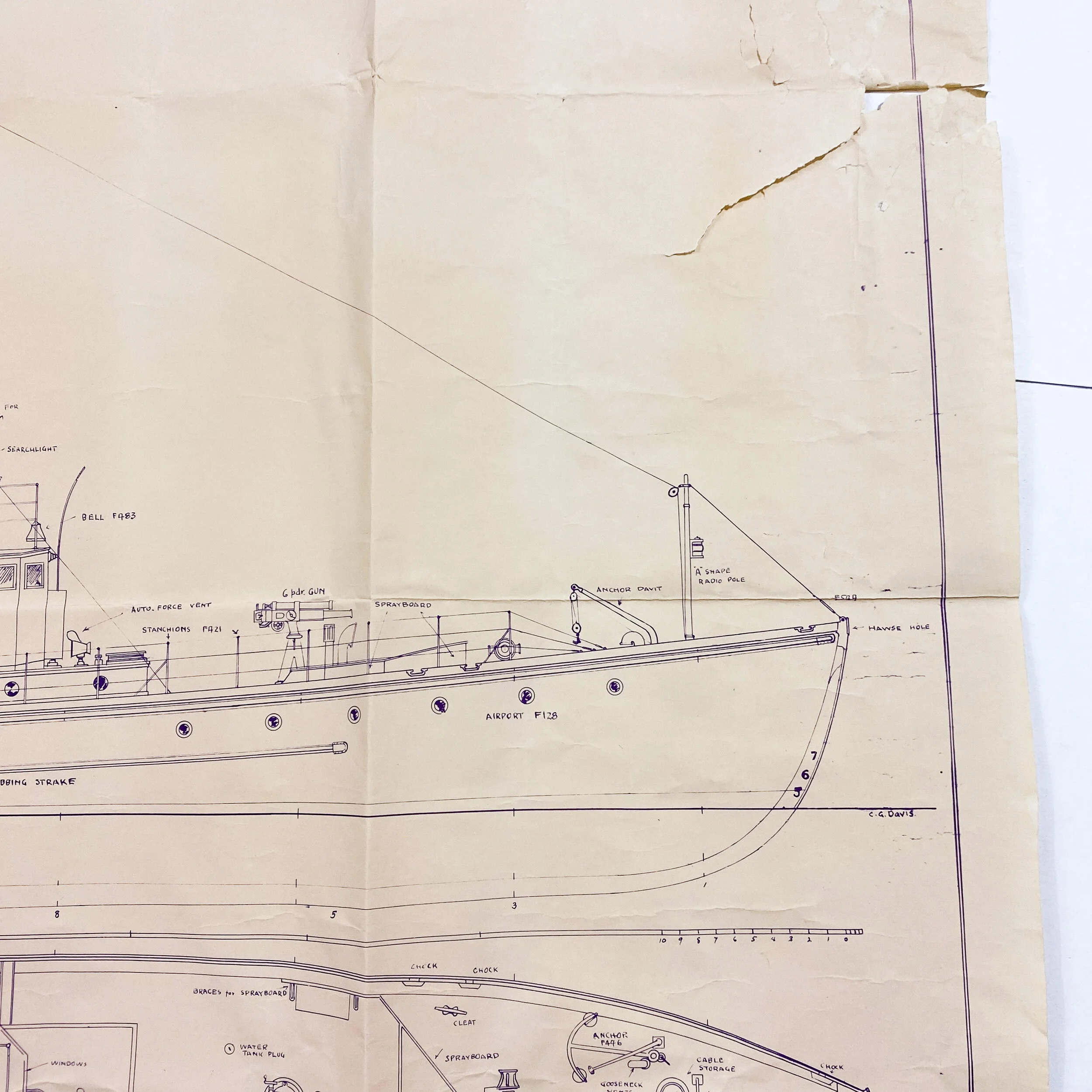


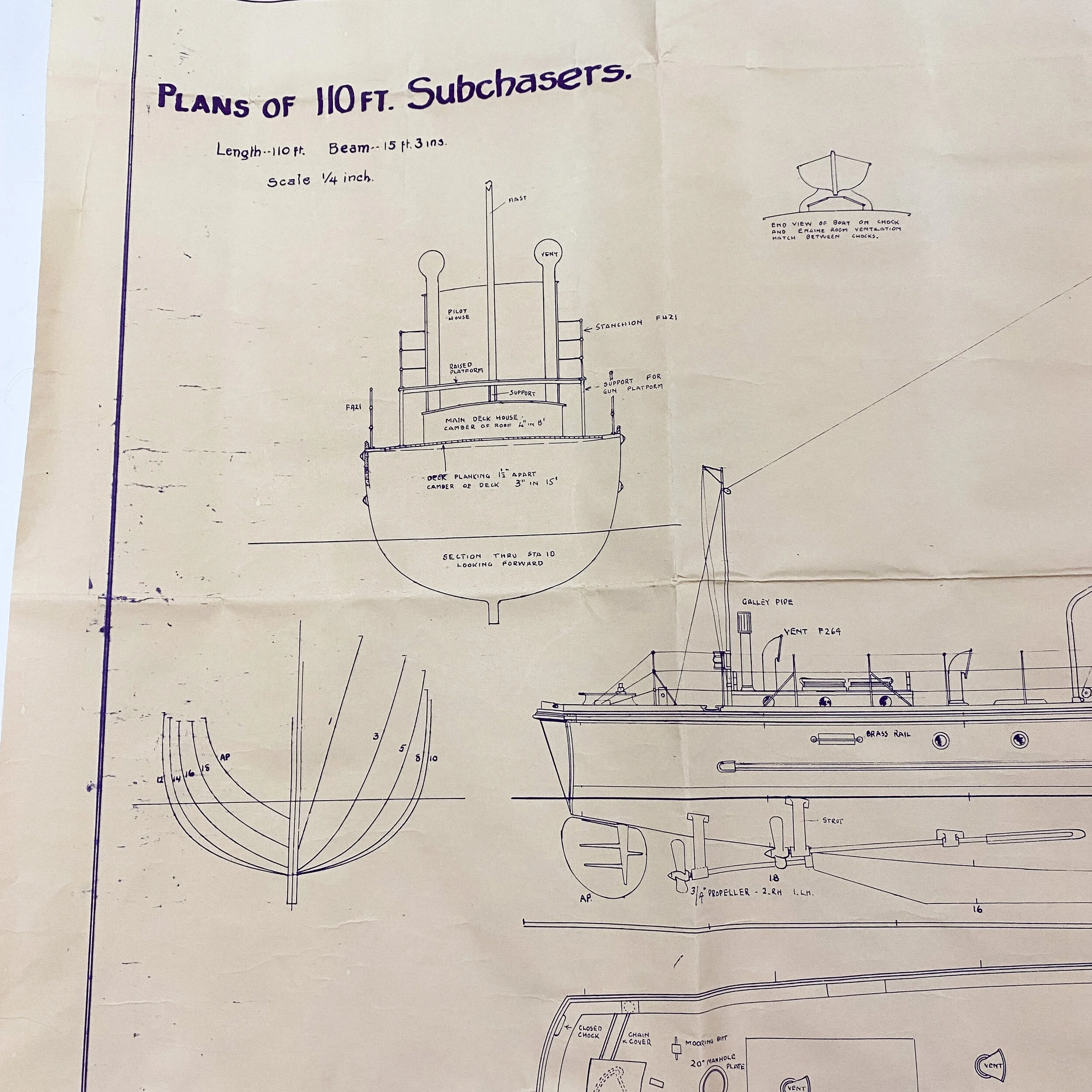



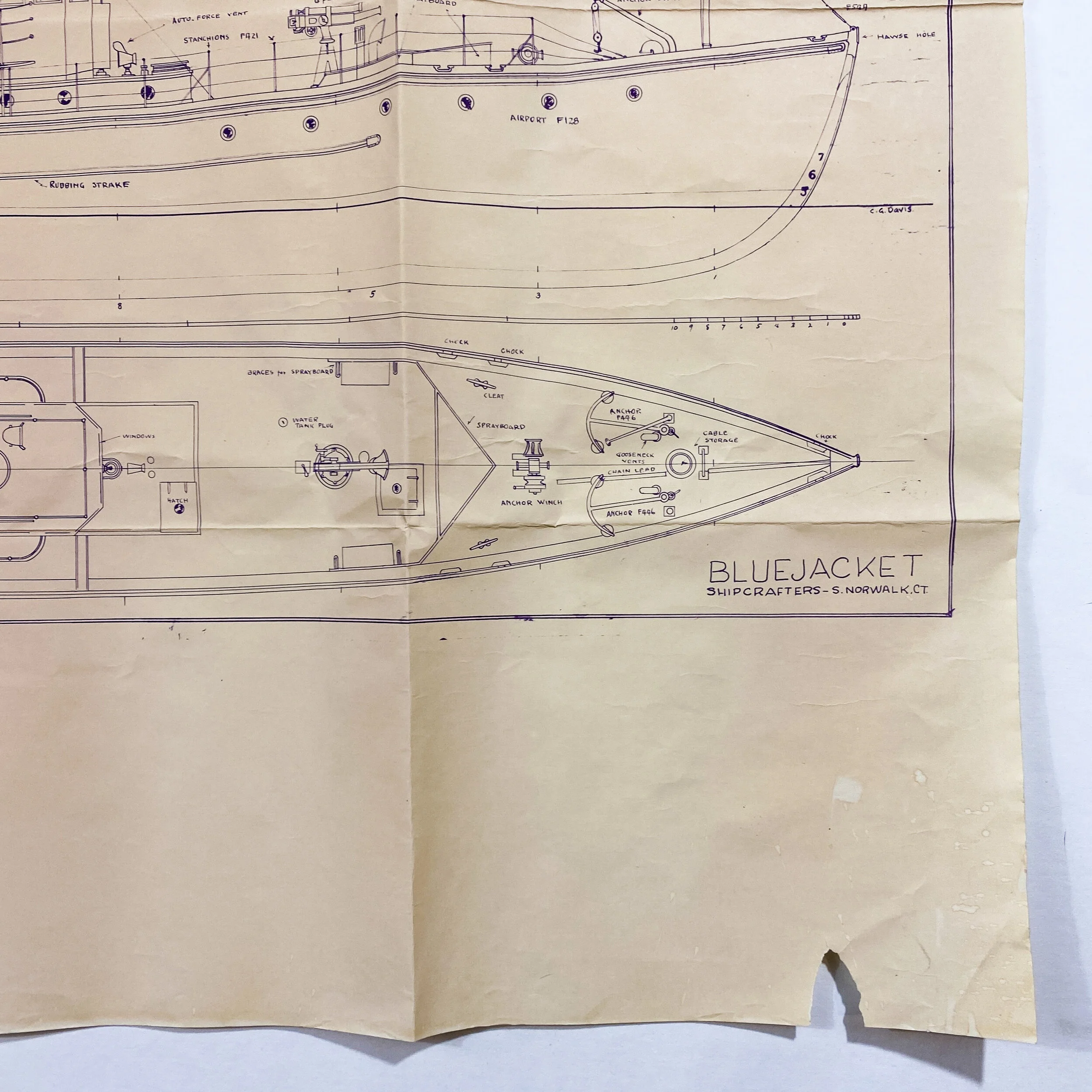











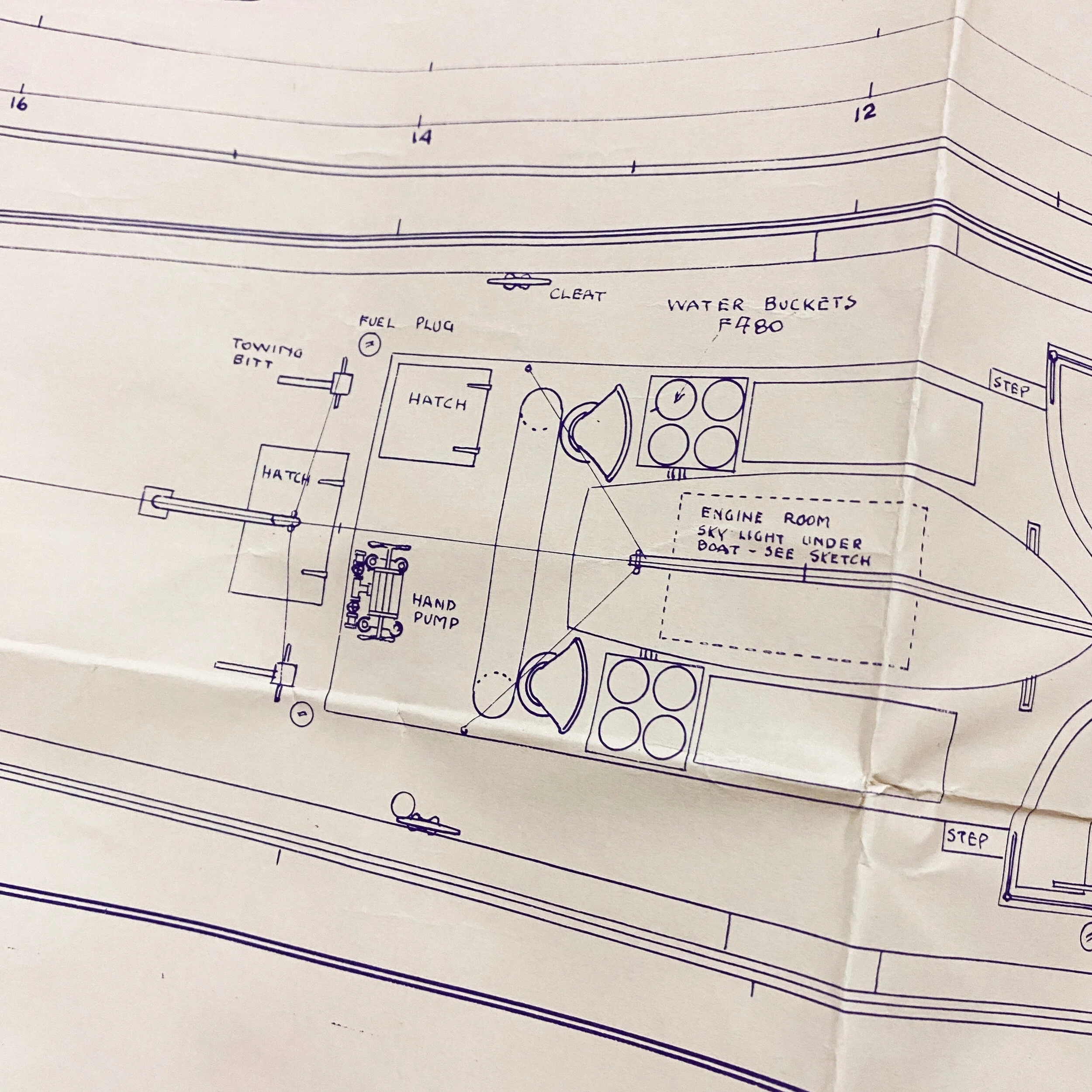

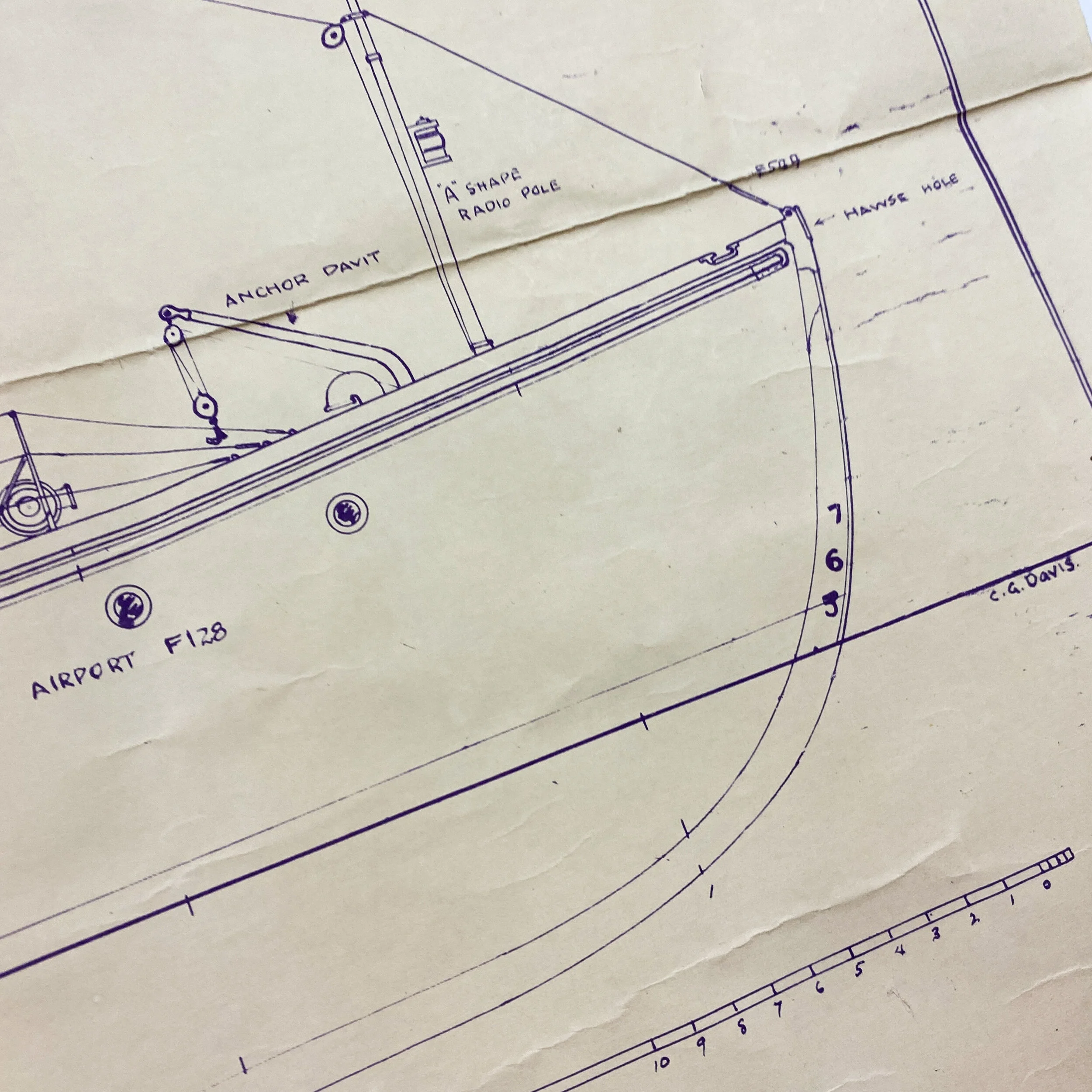
Vintage - Plans of 110 ft Sub-Chasers Layout Blueprint - Bluejacket Shipcrafters
Size: 30.5 x 37 inches
This blueprint comes from the blueprint collection of the famous Edward H. Wiswesser. From 1940-1946, Edward H. Wiswesser worked at the Philadelphia Naval Yard designing warships for the United States Navy, specializing in Iowa-class battleships including his direct hand in designing the Battleships USS New Jersey and the USS Wisconsin. His design of the USS New Jersey was one of the Iowa-class "fast battleship" designs planned in 1938 by the Preliminary Design Branch at the Bureau of Construction and Repair. She was launched on December 7th of 1942 (the first anniversary of the attack on Pearl Harbor) and was commissioned on 23 May 1943. The ship was the second of the Iowa class to be commissioned by the U.S. Navy. The USS New Jersey (BB-62) ("Big J" or "Black Dragon") was the second ship of the United States Navy to be named after the US state of New Jersey. New Jersey earned more battle stars for combat actions than the other three completed Iowa-class battleships, and was the only US battleship providing gunfire support during the Vietnam War. During World War II, New Jersey shelled targets on Guam and Okinawa, and screened aircraft carriers conducting raids in the Marshall Islands. Edward H. Wiswesser other design of the USS Wisconsin (BB-64) is an Iowa-class battleship, the second ship of the United States Navy to be named in honor of the U.S. state of Wisconsin. She was built at the Philadelphia Naval Shipyard in Philadelphia, Pennsylvania and launched on December 7, 1943 (the second anniversary of the Pearl Harbor raid), sponsored by the wife of Governor Walter Goodland of Wisconsin. During her career, Wisconsin served in the Pacific Theater of World War II, where she shelled Japanese fortifications and screened United States aircraft carriers as they conducted air raids against enemy positions.
This specific blueprint is labeled is titled “Plans of 110 ft Sub-chasers ’. The blueprint itself is from the Bluejacket Shipcrafters. The blueprint contains some of the most detailed and intricate constructional layouts of the ship as well as detailed measurements of its length, arraignment, guns and turret attachments. While this blueprint is not of a WWII era ship, it was most likely used as a study blueprint of past Naval ships as Edward H. Wiswesser designed WWII era ships for the Navy.
SC-1 Class:
The SC-1 class was a large class of submarine chasers built during World War I for the United States Navy. They were ordered in very large numbers in order to combat attacks by German U-boats, with 442 boats built from 1917 to 1919.
In 1916, the then Assistant Secretary of the Navy, Franklin D. Roosevelt ordered the US Navy to design a small anti-submarine vessel that could be built quickly in small civilian boatyards, as if war came, larger shipyards would be busy building larger warships. Consideration was given to adopting an 80 ft (24 m) wooden Motor Launch built in large numbers by ELCO for the British Royal Navy, but the General Board of the United States Navy thought that these boats were too small to be effective seaboats. The task of designing the new type was given to an experienced designer of small boats, Albert Loring Swasey. He drew up a design for a 100 ft (30 m) wooden boat, emphasizing seaworthiness over speed. At first it was intended to use two 300 brake horsepower (220 kW) engines, but a shortage of these engines resulted in the design being changed to use three 220 hp (160 kW) gasoline engines.Armament was initially planned to be two 3-inch (76 mm) guns, but the aft gun was usually replaced by a depth charge thrower to attack submerged submarines, with two Colt machine guns completing the armament. Many boats were fitted with hydrophones for detecting underwater noises, with either a K-tube fish-type device of 30-mile (48 km) range or SC and MB tubes of 5-mile (8.0 km) range.
An initial order of 345 SC boats placed in 1917 was planned to be delivered by the end of 1917, with further orders for the French Navy pushing the total ordered up to 448.
The US Navy lost six SC boats during World War I; USS SC-60 lost in collision with the tanker Fred M. Weller on 1 October 1918, USS SC-117 in a fire on 22 December 1917, USS SC-132 was lost in collision on 5 June 1918, USS SC-187 in a collision on 4 August 1918, USS SC-209 by friendly fire from the trawler Felix Taussig on 27 August 1918 and USS SC-219 by fire on 19 February 1918. France lost three SC-boats.